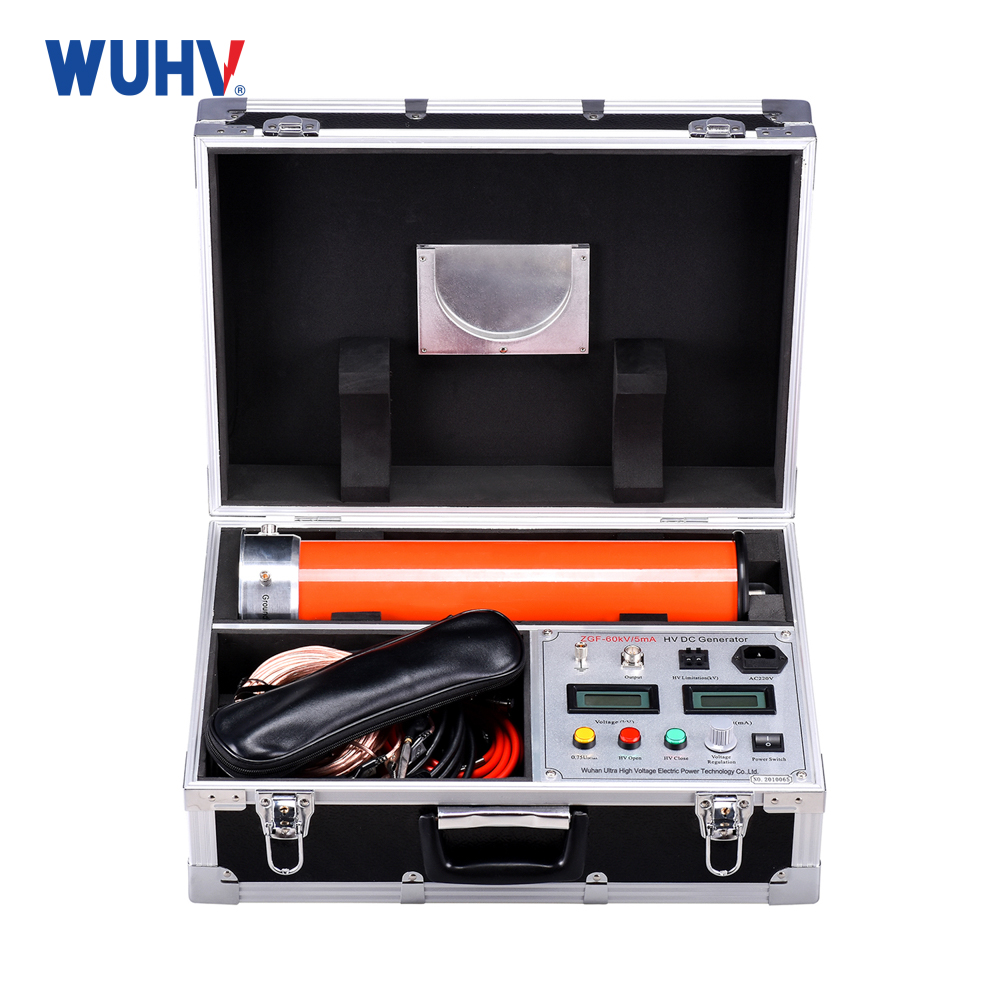The cable fault tester under Wuhan UHV can help many power workers conduct various power tests more conveniently.

The preventive measures for buried cable faults should be comprehensive and detailed. The following are some specific preventive measures, summarized in a clear format:
1、 Preventive measures during the design and construction phases
Reasonably design cable routes
When designing cable lines, sufficient investigation should be conducted to collect soil data from the areas where the lines pass through, and chemical analysis should be carried out to determine the degree of soil and groundwater erosion.
Based on the allowable ambient temperature of the cable conductor, laying conditions, losses and thermal resistance of each part, and the number of parallel circuits, the current carrying capacity of the cable line should be calculated reasonably, and an appropriate laying depth should be designed to avoid problems caused by being too shallow or too deep.
Select high-quality cables
Select cable products with reliable quality and compliance with standards to ensure the quality of the cable itself.
Standardized construction
Strictly follow the construction specifications for cable laying, ensuring that the bending radius and joint production of the cables meet the requirements.
At the cable joint, reinforcement measures should be taken, such as using high-quality joint materials, standardizing joint processes, etc., to prevent the joint from becoming a weak link.
Strengthen anti-corrosion measures
For areas with strong soil corrosiveness, measures such as increasing outer protection and threading cables into corrosion-resistant pipelines should be taken to prevent chemical corrosion of cables.
2、 Preventive measures during the operation and maintenance phase
Regular inspections and checks
Regularly inspect buried cables, check for oil leakage, wear, and corrosion in cable routes and intermediate joints, and promptly address any issues found.
Check whether the cable supports, cable steel armor, etc. are intact, and regularly paint or apply anti-corrosion paint.
Strengthen the maintenance of cable joints
Regularly inspect and maintain cable joints to ensure that the connection points are intact and well insulated.
Regularly inspect and maintain cable joints, such as oil sealing for leaks and checking for leakage current.
Prevent external damage
Strengthen the identification and protection of cable lines, set up clear cable signs or stakes to prevent external damage to cables caused by construction or other reasons.
Establish a communication mechanism with relevant units or departments to promptly understand and handle information that may affect cable safety.
Control cable load
Regularly check and record the current carrying capacity of the cable to ensure that it operates under no load.
For cables that operate under long-term overload, measures such as light load reduction, voltage reduction operation, or modification should be taken to reduce the load on the cable.
Improve technical level
Provide comprehensive professional and technical training for cable laying construction personnel to improve construction quality and level.
Strengthen the training of cable operation and maintenance personnel to improve their ability to diagnose and handle cable faults.
Improve emergency response mechanisms
Develop a comprehensive emergency plan for cable faults, clarify the fault handling process and responsible personnel, and ensure that prompt and effective handling can be carried out in case of cable faults.
3、 Other preventive measures
Strengthen environmental monitoring
Regularly monitor the environment around cable lines to understand changes in soil and water quality, and promptly identify and address factors that may affect cable safety.
Adopting new technologies
Actively explore and apply new technologies, materials, and processes to improve the reliability and safety of cables. For example, adopting fully electrified systems, intelligent monitoring technology, etc.
In summary, preventive measures for buried cable faults need to start from multiple aspects such as design, construction, operation, and maintenance, comprehensively and meticulously carrying out various tasks to ensure the safe and stable operation of the cable.



















